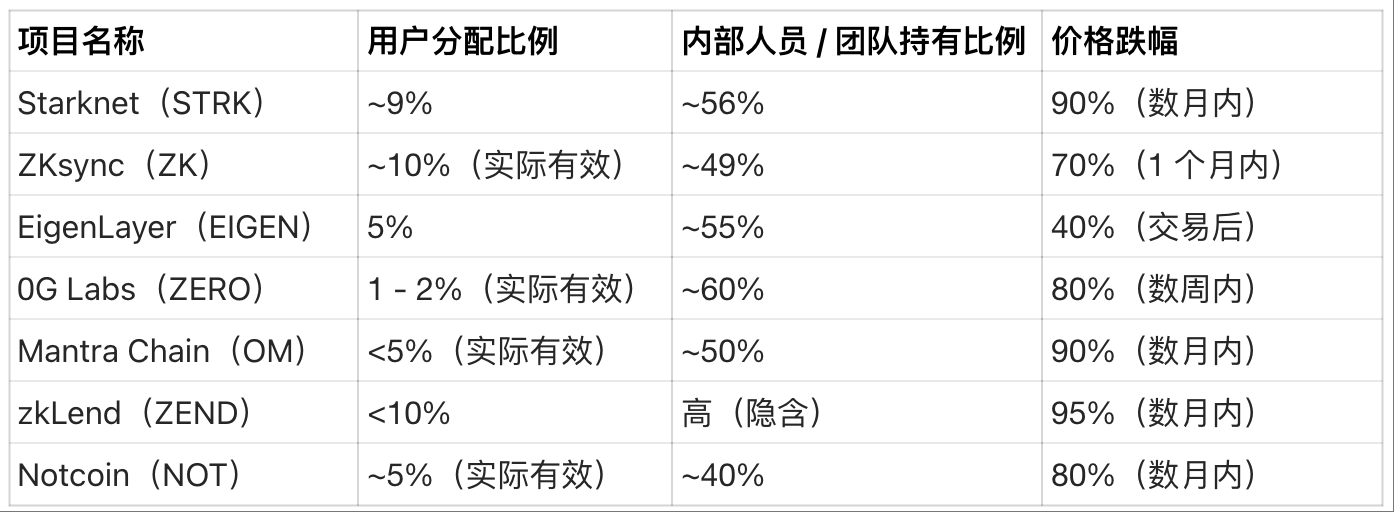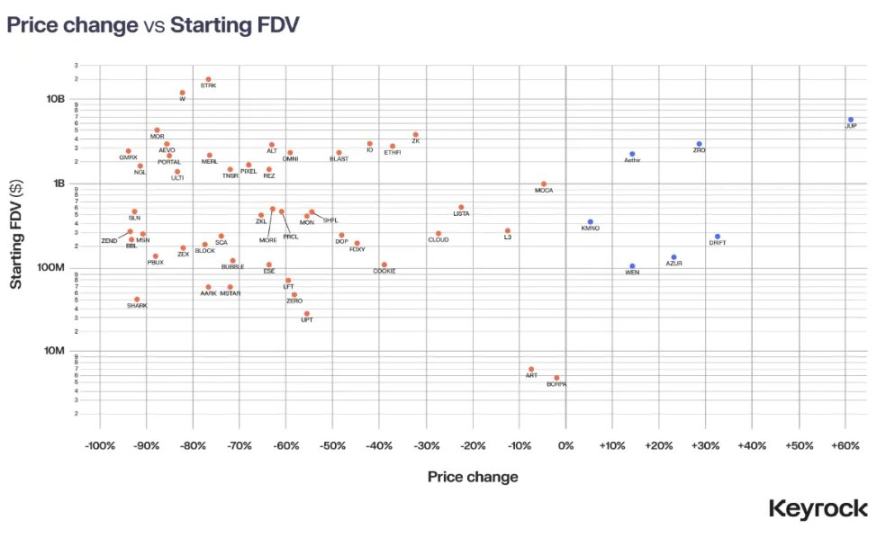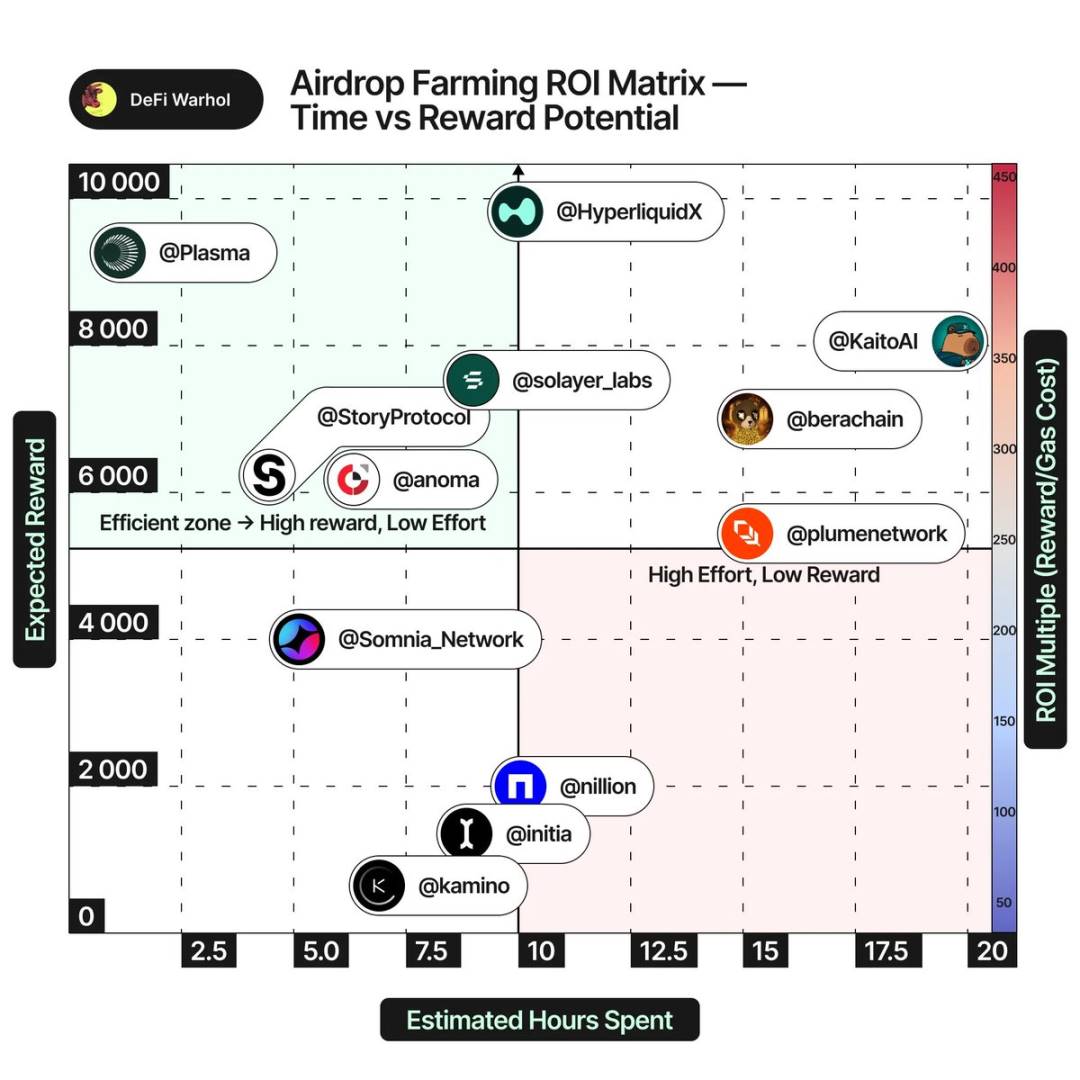Airdrop evaluation is an "art + science": it requires understanding human incentives and crypto narratives (art), as well as analyzing data and token economics (science).
Written by: DeFi Warhol
Translated by: Saoirse, Foresight News
(The original text has been condensed and refined)
Cryptocurrency airdrops may seem like "free money," but experienced "airdrop hunters" know that not every airdrop is worth the gas fees and effort. Over the past 5-7 years, I have participated in dozens of airdrops, some yielding six-figure returns, while others ultimately proved worthless.
The key difference lies in detailed evaluation. This article will construct a framework, combining real cases like Uniswap and quantitative benchmarks, to guide practitioners in identifying high-potential, low-risk airdrops.
Key Dimensions of Airdrop Evaluation
Evaluating airdrop potential is not based on guessing or following trends, but rather a structured process. The following breaks down six core dimensions, each focusing on key factors affecting risk and return:
Protocol fundamentals and narrative
Token distribution and token economics
Eligibility criteria and resistance to witch attacks
Balance of investment, cost, risk, and return
Market environment and timing
Liquidity and exit strategy
Detailed Explanation:
Protocol Fundamentals and Narrative
Before engaging with testnets or cross-chain transfers, it is essential to assess the project itself — the value of the airdrop stems from the success of the underlying protocol, not from thin air.
Core Value of the Project: Does the project solve a real problem (like Arbitrum's Ethereum scaling solution), or is it merely chasing trends? Projects with strong application scenarios or innovative technologies (such as new scaling solutions or unique DeFi modules) are more likely to see their token value break through short-term speculative cycles; conversely, imitation projects without unique advantages often face price stagnation after "hunters" sell off.
Market Narrative Fit: The crypto market is driven by narratives, and themes like modular blockchains, re-staking, and ZK Rollups attracted significant attention in 2023-2024. Projects that align with hot narratives (like Celestia, a modular data network) may see token demand explode if they can continuously validate their value; however, caution is needed for "pure narrative projects" without technical support, as their popularity often fades quickly.
User and Developer Activity: Assess the project's vitality through on-chain data (testnet activity) and community dynamics (Discord discussion heat). If user behavior is not purely speculative (for example, the NFT market Blur achieved real trading volume growth through gamified airdrops), the project has greater long-term potential.
Key Conclusion: If you are only interested in a project because "there's an airdrop" and do not recognize its core value, proceed with caution — if the protocol itself has flaws, no matter how cleverly designed the airdrop is, it cannot sustain token value in the long run.
Token Distribution and Token Economics
Token design is a core aspect that determines airdrop value, focusing on distribution ratios, value capture mechanisms, lock-up rules, and valuation rationality:
- User Distribution Ratio: Airdrops that allocate more than 10% of the total supply to users typically have higher user retention rates and more stable token performance; if the ratio is below 5%, concentrated sell-offs are likely. For instance, Uniswap's 2020 airdrop allocated 15% of the UNI supply, peaking at a value of $6.4 billion and fostering a loyal governance community; however, some 2024 airdrops saw tokens plummet immediately after launch due to minimal user distribution and internal control.

Differences in short/long-term performance and user retention under various airdrop size ratios

2024 Cryptocurrency Airdrops: Low user distribution and dominance by insiders
Value Capture Mechanism: Tokens need to have real economic functions (like dividends or fee sharing), rather than being used solely for governance. If a token only serves a governance role (like UNI or DYDX), it must rely on DAO control over cash flow or system parameters to have long-term value; conversely, projects like HYPE and GMX that link token value to revenue provide "hunters" with the dual option of "acquiring airdrops + holding cash flow," making them more attractive.
Lock-up and Liquidity: Prefer airdrops where tokens can be immediately traded — forced long-term lock-ups or veToken mechanisms (like EigenLayer's initial airdrop in 2024 where tokens were non-transferable) can prevent "hunters" from cashing out in time, increasing risk.
Fully Diluted Valuation (FDV): An excessively high FDV (for example, some projects in 2024 saw a 50%-80% drop within two weeks of launch) is a significant trigger for token price crashes. Compare with similar projects to find a "margin of safety": if a similar project is valued at $500 million while the target project has an implied valuation of $5 billion, caution is warranted; also, pay attention to liquidity — being listed on mainstream exchanges or having sufficient DEX depth is essential to avoid "high-quality projects being sold off due to lack of liquidity."

How newly launched crypto tokens perform relative to their fully diluted valuation (FDV)
Market Signals Before TGE: Price signals in the trading market before token issuance can reflect narrative strength, but be wary of overestimation risks; use them as sentiment indicators rather than guarantees, and adjust exposure accordingly.
Distribution Fairness: Avoid excessive concentration of tokens among a few "whales" (for example, in the Arbitrum airdrop, top users received 10,250 ARB, creating instant whales). Prefer projects with capped individual rewards and quadratic distribution (like Blast L2, which avoids "the rich getting richer" through activity limits) to reduce the risk of concentrated sell-offs.

Gini coefficients and situations of token distribution for three projects' airdrops in 2023-2024
(Note: The Gini coefficient is a measure of distribution fairness; the higher the value, the less fair the distribution.)
Eligibility Criteria and Resistance to Witch Attacks
Clarifying airdrop eligibility rules and the project's anti-witch mechanisms can help assess the "probability of receiving rewards" and the "feasibility of multi-wallet strategies":
Rule Transparency: Clear and public rules (like Arbitrum's point tasks: cross-chain, multi-month trading, providing liquidity) facilitate planning participation; if the rules are vague, "over-manipulation" is needed to cover risks, which is highly inefficient.
Single Wallet Input-Output Ratio: Estimate returns based on historical cases (for example, Ethereum L2 airdrops average $500-$2000 per wallet): if the potential returns are high (like early dYdX traders earning tens of thousands of DYDX), high input is acceptable; if extreme effort is required (like running nodes for months) but only yields regular returns, it is advisable to reduce input or abandon the effort.
Anti-Witch Mechanism: Projects typically use technical means to identify and ban multi-account operations (for example, Optimism removed 17,000 witch addresses in 2022, and LayerZero reduced rewards for 800,000 witch addresses to 15% in 2024). If a project has a clear anti-witch stance, using multiple wallets may lead to wasted gas fees and disqualification; focus on 1-2 "real activity wallets" instead.
Risk of Rule Changes: Some projects may temporarily adjust eligibility (like redefining "witch behavior"), so it is essential to stay updated through community dynamics to avoid being "excluded after completing actions."
Balance of Investment, Cost, Risk, and Return
Airdrops are essentially investments of time and funds, requiring prior cost-benefit analysis:
- Time and Complexity: Avoid "high time consumption with low returns" (like spending 100 hours for $500); be cautious of "point activities" without clear deadlines, as these can easily become "diminishing returns traps." Set periodic evaluation points (for example, if points do not reach the top user X% within one month, exit).

Airdrop farming ROI (Return on Investment) matrix, showing the relationship between time and returns for various projects
Gas and Direct Costs: Simulate operations in advance to calculate costs (for example, Arbitrum requires $10,000 for cross-chain + multi-month trading, significantly increasing costs in high gas networks); if costs approach or exceed expected returns (like during the high gas period in 2021, small airdrop claim fees exceeded $100), it is advisable to abandon the effort.
Capital Risk: If locking, providing liquidity, or staking is required, assess the security of smart contracts (like the $600 million theft incident on the Ronin bridge); prioritize projects that are audited and have low vulnerability risks to avoid "losing principal in pursuit of airdrops."
Worst-Case Scenario Planning: Assume some projects have "no airdrop" or "tokens are worthless," controlling irreversible costs (set checkpoints for time, do not over-invest funds); use "expected ROI = airdrop probability × estimated value - cost" for decision-making, only advancing projects with positive expectations.
Market Environment and Timing
Bull and Bear Cycles: In a bull market, airdrop valuations are high, and buyer FOMO is strong (for example, airdrop tokens surged after launch in 2021); participate more and extend holding appropriately; in a bear market, demand is tepid (for example, in 2022-2023, Optimism and Aptos faced severe sell-offs in the early airdrop), focus only on high-potential projects and sell upon listing.
Narrative Cycle: Assess the narrative stage of the airdrop — if a testnet is in a "public farming" phase (like the late re-staking narrative in early 2024), easy profit opportunities may have disappeared, and anti-witch measures may be strengthened; conversely, low-key airdrops in emerging fields (like AI-DeFi hybrid protocols in 2025) face less competition and have higher success rates.

Airdrop yield curve, showing ROI and opportunity levels at various stages of the narrative cycle
Project Timeline: If the mainnet/token launch is imminent (within a few weeks), the farming time should be shortened; for ongoing testnets, assess the farming cycle and pay attention to snapshot dates (complete activities in advance to avoid last-minute rushes).
Crisis Response: Projects with teams that professionally handle vulnerabilities and high community engagement are more resilient (for example, Arbitrum and Optimism, despite airdrop controversies, have seen user growth); if even a small delay leads to community loss, the project's popularity is likely superficial, and caution is warranted.
Liquidity and Exit Strategy
"Profiting from airdrops" must translate into "monetization," requiring advance planning of exit paths:
Claim Strategy: When token claims open, gas prices may surge, and RPC (Remote Procedure Call) may crash (as seen on Arbitrum claim day chaos); prepare alternative RPC solutions in advance, and prioritize claiming from "wallets intended for immediate sale" during multi-wallet scenarios to avoid peak times.
Market Liquidity: Prefer airdrops that will be listed on mainstream exchanges or have sufficient DEX depth (for example, ARB had $1 billion in trading volume upon launch, making exit convenient); niche projects that only trade on a single DEX may suffer from slippage eroding profits, so consider adjusting positions or abandoning them.
Sell, Hold, and Stake: Most airdrop tokens peak within two weeks, with a common strategy being "sell 50% on the first day/when claiming to lock in profits, and set a trailing stop for the remainder"; only hold long-term for projects with deep conviction, and weigh "additional returns against loss of flexibility" when staking (for example, governance lock-ups require giving up immediate selling).

Time and related data for airdrop tokens reaching historical highs
- Tax and Compliance: Airdrops are considered taxable income in most regions, so set aside tax funds; be aware of regional restrictions (for example, EigenLayer prohibits U.S. users) and KYC requirements (some airdrops in 2025 will require KYC compliance) to avoid "valuable airdrops that cannot be monetized."
Best Practices and Core Conclusions
Key Operational Recommendations
Conduct Research in Advance: Do not rely on rumors; verify token plans through project documentation and governance forums to avoid "assuming an airdrop exists when it does not" or "missing an airdrop that is available."
Validate Value Proposition: Clarify the logic behind airdrop value (for example, "leading projects in new fields + low initial market cap + high demand") and continuously validate with on-chain data; if the narrative breaks (for example, project growth stagnates), adjust strategies promptly.
Quantitative Scoring Comparison: Use a weighted scoring system based on "protocol quality 30% + return potential 30% + cost risk 20% + witch difficulty 20%" to identify "low-heat, high-risk-return ratio" projects and avoid crowded competition.
Diversify Risks: Treat airdrops as part of an investment portfolio, participating in 5-10 projects simultaneously, and keep reserves to respond to "super airdrops," avoiding single bets.
Systematic Profit Taking: Exit according to plan, not swayed by greed (for example, don’t wait for a $20,000 airdrop when you could have locked in $10,000, only to see it shrink to $2,000), and rationally lock in profits.
Iterative Learning: Record the successes and failures of each airdrop (for example, overestimating potential or missing qualification details), optimize the evaluation framework, and cultivate the intuition to "identify market undervaluation opportunities."
Core Conclusion
Airdrop evaluation is an "art + science": it requires understanding human incentives and crypto narratives (art), as well as analyzing data and token economics (science). The best airdrops reward "early genuine participation," rather than short-term speculation — if you recognize and support quality projects early on, you are likely to achieve the highest returns.
By focusing on fundamentals, rationally assessing token design, accurately evaluating input-output, and flexibly responding to information changes, you can significantly increase the probability of "capturing high-value airdrops." Ultimately, airdrops should be viewed as formal investments, necessitating due diligence, risk management, and strategic planning to find effective signals amid the overwhelming information and seize the next opportunity akin to UNI or ARB.
免责声明:本文章仅代表作者个人观点,不代表本平台的立场和观点。本文章仅供信息分享,不构成对任何人的任何投资建议。用户与作者之间的任何争议,与本平台无关。如网页中刊载的文章或图片涉及侵权,请提供相关的权利证明和身份证明发送邮件到support@aicoin.com,本平台相关工作人员将会进行核查。




